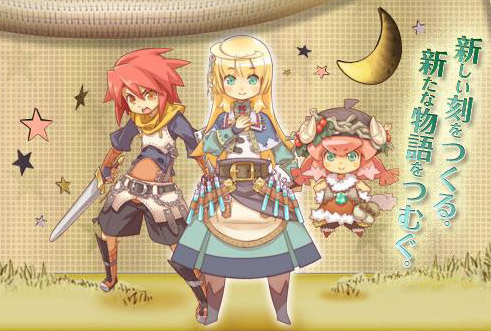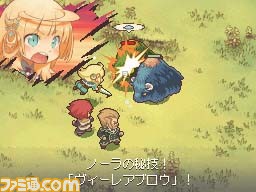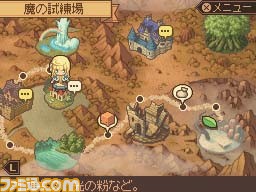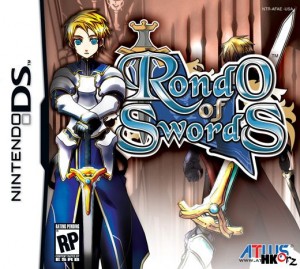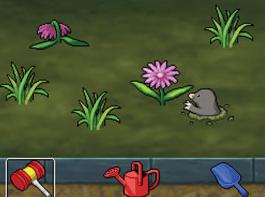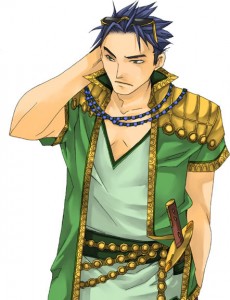 Just finished my first and only playthrough of Arabians Lost
Just finished my first and only playthrough of Arabians Lost (no Osama jokes, please) for the Nintendo DS. I went for the heroine’s childhood friend Tyrone Bale because he seemed like a nice guy. Plus he was the only one that didn’t make her go, “Gawd I hate this guy!” at the start, so I figured that was a good sign.
(no Osama jokes, please) for the Nintendo DS. I went for the heroine’s childhood friend Tyrone Bale because he seemed like a nice guy. Plus he was the only one that didn’t make her go, “Gawd I hate this guy!” at the start, so I figured that was a good sign.
The main character Aileen is a real piece of work. She’s whiny, stubborn, mean, sarcastic and bitchy (inb4 “Just like a real girl”). Her only saving grace is that she keeps most of those thoughts to herself, which is the only thing that keeps her in second-place to Tamaki from Hiiro no Kakera as No. 1 Otome Game Bitch. Plus it helps that most of the people she bitches about are nasty guys anyway.
This is probably the most unlikable cast of characters I’ve ever played with in a video game, and I’ve played quite a few. Thieves, swindlers, murderers, compulsive gamblers, loan sharks… about the only thing they didn’t have is a serial rapist, and I’m still not sure about that Lille… So when Aileen complains in the beginning about having to pick a husband from this bunch, I see where she’s coming from. Which is why it’s so weird that she ends up with one of them in the end. Then again she’s not exactly Princess Charming either.
So! Back to Tyrone Bale, her childhood friend. Unlike the other characters, he’s just a dumb, violent gang leader. Practically a saint, really. And he’s nice to you from the get go. I don’t know whether to call my playthrough “doing his route”, though. “Routes” in other dating sims/visual novels involve a series of events or dates with a guy, picking certain options and doing certain things in order to get them to like you. In Arabians Lost, there’s nothing to choose. Raising a guy’s affection is just about asking him to accompany you to places repeatedly. If his affection is over 100 by the end, you’re set to get a romantic ending with him. That’s it. No choices to make, no dates to go on, no compulsory events to see, nothing. To make the process faster, there are two items you can use to raise a guy’s affection even more. IIRC I raised Stuart’s affection from 0 to 52 in one day just by using them repeatedly.
Back to Tyrone again – he was really boring, so I keep going off-topic – his backstory is that he was a childhood friend of Aileen’s along with Stuart but they got estranged after Stuart’s mother committed suicide. All well and good, but thanks to that we get this really uncomfortable situation (for the player) where all Aileen and Tyrone ever do is talk about their childhood and how they used to play together and stuff. It makes me feel like an outsider butting in when they know each other so well already. Like going to a stranger’s family reunion where everyone knows each other and they’re all talking about “Hey, remember the time we did this? And that time when you did that? That was like, sooo funny!” After a few minutes, you really want to go home.
As if that’s not enough, almost all of Tyrone’s events revolve around talking about either Stuart or Tyrone’s older sister. Stuart this, Stuart that, my older sister this, my older sister that. What about you, Tyrone? Who are you? Don’t you have a mind of your own? To be fair to him, it’s usually Aileen who brings Stuart into the conversation. She seems to be obsessed with him in some kind of way – in fact it’s flat-out stated several times in the game that he was her first love – so she’s always finding ways of worming him into the conversation even when he clearly doesn’t belong. That’s why I gave her that day with Stuart so she’d be satisfied. Hope you’re happy Aileen, you two-timing <bleep>. She ended up with Tyrone, but it won’t be long before she’s cheating on him with Stuart, I just know it.
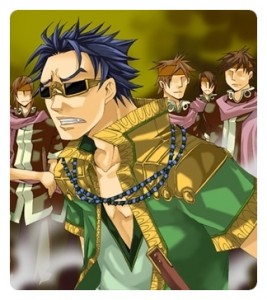 Tyrone wasn’t the only disappointment in Arabians Lost though: the game itself is just too easy! Most of the attraction of Arabians Lost for me was that it had actual gameplay elements and wasn’t just 10 hours of reading. Not just gameplay elements: RPG battles and dungeon exploration! Who can turn that down? Unfortunately the game was probably made for an audience that presumably doesn’t play many RPGs so the battles were ridiculously easy! Enemies were few! Palette swaps were many! Helpful guy was helpful <– they’re not supposed to help you in battle unless they like you, but I found they helped me right from the start anyway, the sweethearts. I never died even once. Leveling up was fun, but your level caps off at 5 (five)! Which I managed within 12 days without even breaking a sweat. There’s a dungeon you can only enter at level 5, but what’s the point when your level is maxed? To make money? Well, uhh, about that…
Tyrone wasn’t the only disappointment in Arabians Lost though: the game itself is just too easy! Most of the attraction of Arabians Lost for me was that it had actual gameplay elements and wasn’t just 10 hours of reading. Not just gameplay elements: RPG battles and dungeon exploration! Who can turn that down? Unfortunately the game was probably made for an audience that presumably doesn’t play many RPGs so the battles were ridiculously easy! Enemies were few! Palette swaps were many! Helpful guy was helpful <– they’re not supposed to help you in battle unless they like you, but I found they helped me right from the start anyway, the sweethearts. I never died even once. Leveling up was fun, but your level caps off at 5 (five)! Which I managed within 12 days without even breaking a sweat. There’s a dungeon you can only enter at level 5, but what’s the point when your level is maxed? To make money? Well, uhh, about that…
That 10,000,000G you’re supposed to make in 25 days? I made it in 5 days by abusing roulette in the casino. You can play there several times a day (twice at each time of the day, I believe) and make up to 16,000,000G each time playing roulette. In fact, I made the maximum figure of 99,999,900G in 10 days and had nothing to do after that. That was a total mistake on my part. Normally if a game can be easily broken I’m all for breaking it, but this time I definitely shot myself in the the foot. There’ll be no next time, but if I ever play a similar game, I’ll try to make the money honestly. I mean, I can always cheat on the last day, right?
So there I was, max level, max money, 230 affection from Tyrone, only halfway through the game? Too, too boring. There was absolutely nothing to do. There are precious few places you can visit in the game: four dungeons, five places in the castle. In the city there are two guilds, one casino and one pub, that’s it. Dungeons are usually small and straightforward and the dungeon bosses are as easy as pie. Clearly the gameplay was deliberately dumbed down so players could focus on character interactions instead. I got an amusing scene with Stuart and Tyrone after I raised Stuart’s affection, for example.
Luckily there’s an option in your room that lets you skip straight to the last day whenever you want, but I didn’t want to do that because I was afraid I’d miss something. That something turned out to be the festival on Day 20 where Aileen confesses to Tyrone (no, not vice-versa) and they share their first kiss. Even then Stuart manages to find his way into the conversation.
In short, I don’t really like Arabians Lost. It’s not a complete dud but it hasn’t got anything to offer me. Aileen already has her preferred guys and she already has relationships with all of them, so the player is more going along for the ride than anything else. I couldn’t even stop her from confessing to Tyrone, she just blabbed it all out without permission. The art is also bad and all the guys are average-to-ugly. Short necks, oddly long limbs, weird faces that change from angle to angle. The backgrounds are nice, but there are only so many times you can look at them before getting tired. Ugly art also means ugly-to-meh CGs, and the accompanying events are LOOOOONG. Talk talk talk talk talk talk talk for like 15 minutes for each event. And there are over 250 CGs to get?! What?! DO. NOT. WANT.
So that’s the end of Arabians Lost for me. I was going to get Stuart next to complete the story and find out why his mom really did kill herself, but now that I think of it, I don’t really care. There’s no way I’ll be able to force myself to read all that text. Lille seems nice, but boring, Shark is okay but also kind of boring. As for Roberto, well, having a gambling addict for a king seems to be a one-way trip to bankruptcy, so I don’t even know what he’s doing in this game. I also have absolutely no interest in that sick murderer Curtis. I don’t care what your reasons are, just GTFO of my kingdom. This isn’t the game for me and it’s time to move on.
today, adding a character description for Nora’s companion Keke as well as a two-minute trailer that shows the creation system, but not in detail. All we know for sure is that she manipulates time and uses it to make items somehow. It showed a bit of the battle system as well, but not in any kind of detail. It’ll be probably be like other Gust games where you hire adventurers to accompany you when item foraging, which raises their affection for you. Nora’s “Nani ga toreru kana,” “yatta!”, “dekita!” and “un, kanpeki!” lines gave me serious Atelier flashbacks as well. I’m looking forward to this!
